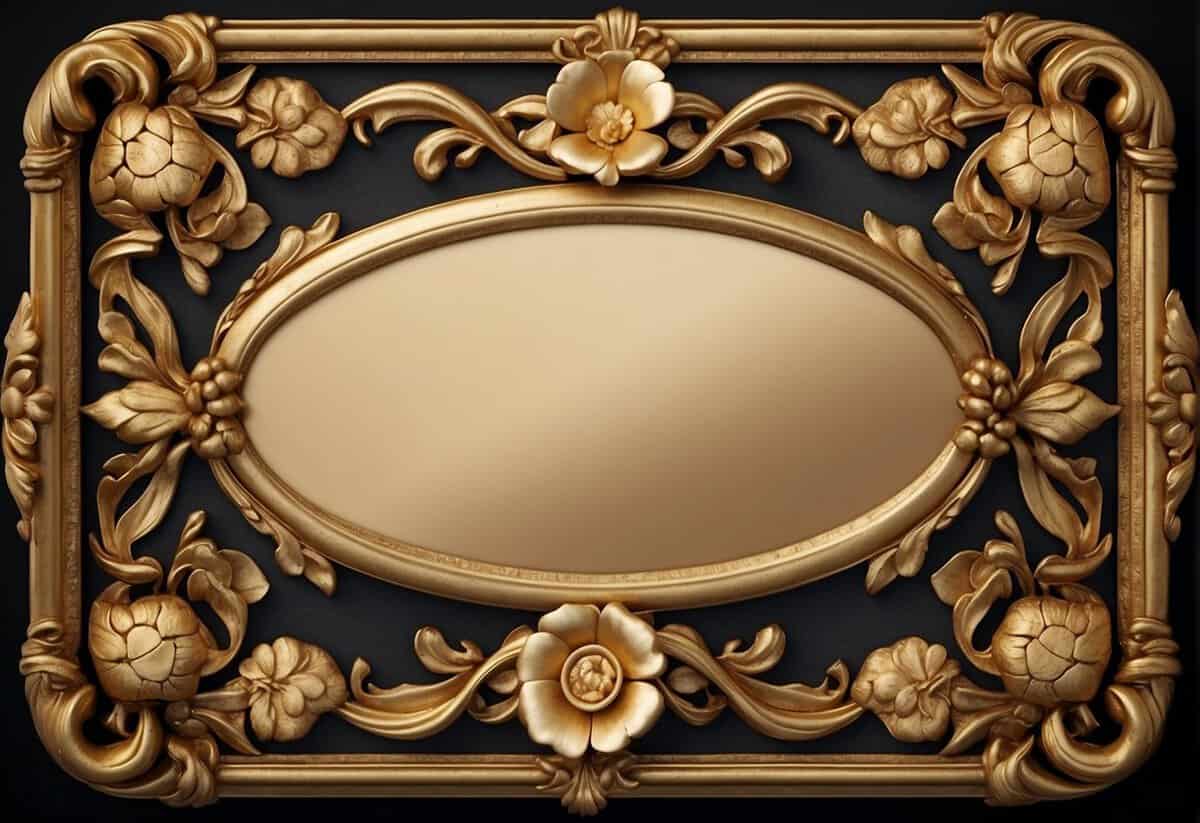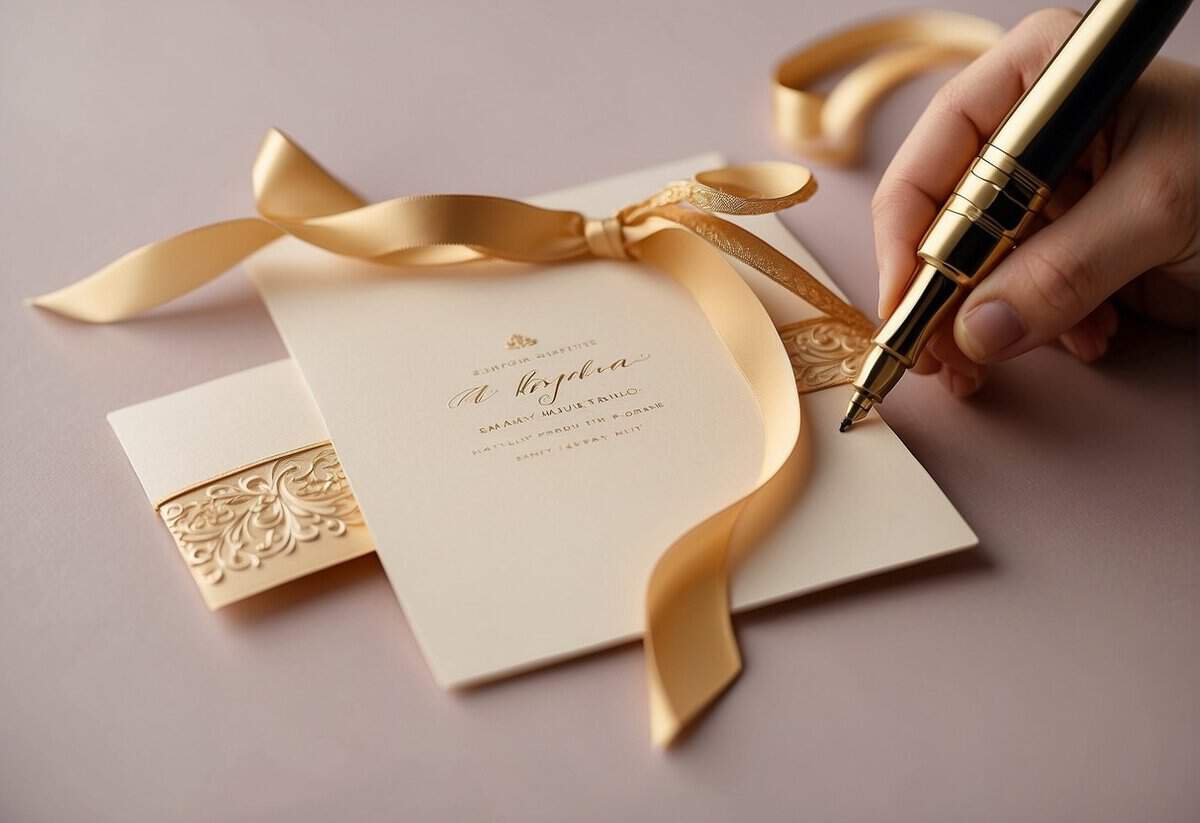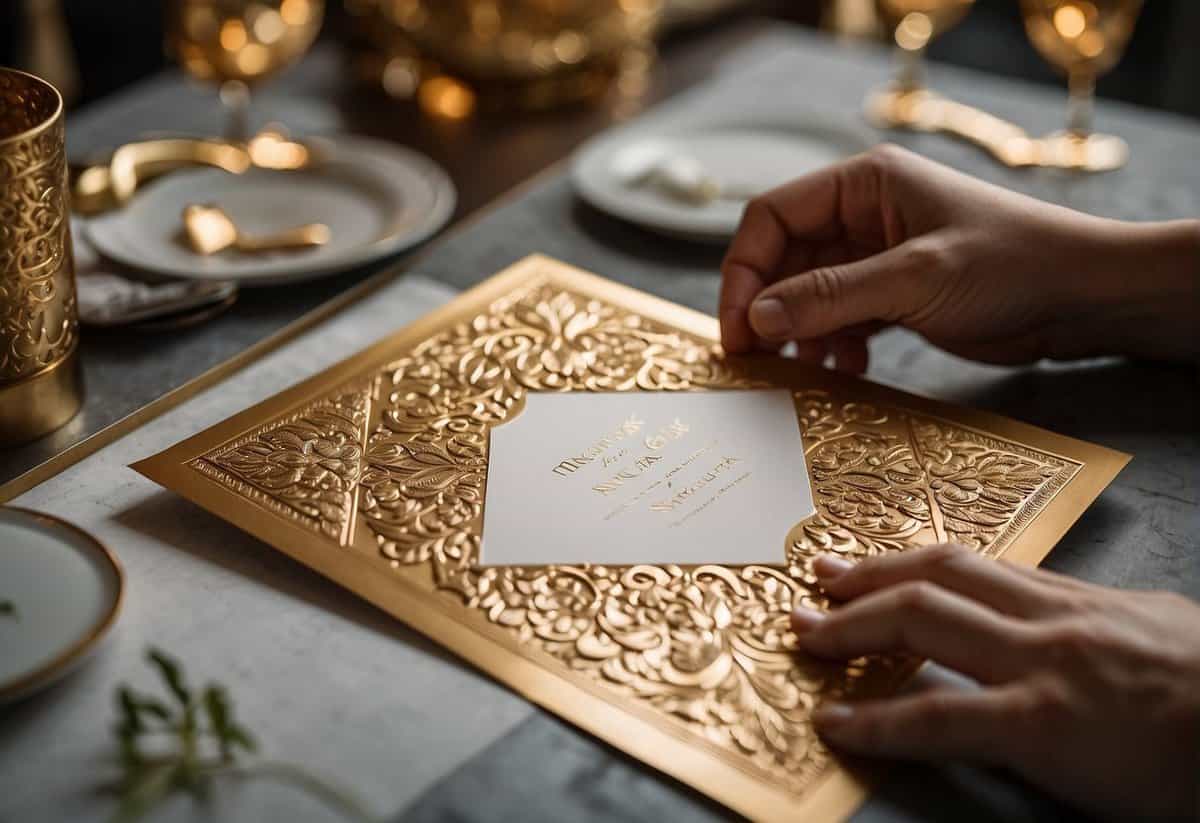Elegant Wedding Invitation Ideas: Styles to Charm Your Guests
Elegant wedding invitations are the hallmark of a beautifully planned marriage ceremony, setting the tone for your special day even before it begins. The right invitation not only conveys the essential details like date, time, and venue but also reflects the style and elegance of the event. When designing your wedding invitations, it’s important to choose a design that resonates with the theme and sophistication of your wedding.

The process of selecting and crafting your wedding invitations can be both creative and meticulous. From choosing the perfect paper to incorporating meaningful details, every element should come together harmoniously. Employing tasteful wording, appropriate fonts, and an aesthetic layout are crucial for creating an invitation that impresses and informs your guests. Consider the impact of the different printing techniques available, as they can add a distinctive touch to your elegant wedding invitations, whether it be through letterpress, engraving, or foil stamping.
Key Takeaways
- The design of your invitation sets the tone for your wedding.
- Precise wording and an elegant layout are crucial for the invitation’s impact.
- The printing technique can add a distinctive charm to your invitations.
Designing Your Invitation

Creating the perfect wedding invitation is about expressing your personality and setting the tone for your big day. It’s a delicate blend of choosing the right colors, balancing modern and vintage elements, and playing with textures and layers to captivate your guests.
Choosing the Right Color Scheme
When you’re selecting a color palette, it should reflect the mood you want to set. For a modern look, consider going with a minimalist design that uses bold and simple colors. If you’re inclined towards something more romantic, rose gold hues can add a warm, soft glow to your invitations. Remember, colors evoke emotions; vintage styles often use muted tones that convey nostalgia, while modern themes might lean towards crisp, stark contrasts.
Modern Vs. Vintage Styles
Deciding between modern and vintage styles will hinge on the aesthetic of your wedding. Modern invites usually embrace clean lines and minimalist designs, perhaps with a dash of color for a bold statement. In contrast, vintage invitations might include elaborate fonts or ornate patterns that give a nod to the past. If you’d like to blend the two, consider incorporating modern textures with vintage colors.
Incorporating Textures and Layers
The feel of your invitation is just as important as its appearance. Adding textures and layers can turn a simple invitation into a tactile experience. Foil accents, like gold foil, can introduce a luxe feel; consider it for highlighting your names or the date. For a subtle, yet sophisticated three-dimensional effect, layering different textures of paper can elevate the elegance of your design.
By carefully considering each of these elements, your invitation will not only announce your special day but also be a keepsake that embodies the style and spirit of your union.
Invitation Essentials

When planning your wedding, your invitation not only sets the tone but also conveys the vital details of your big day. It’s important to select the right elements that reflect your style and ensure guests have all the information they need.
Key Features of Wedding Invitations
Paper Quality: The feel of the invitation is your guest’s first physical contact with your wedding. Luxury options like heavyweight, cotton-blend papers make a statement about the elegance of the event.
Design and Style: Whether it’s a simple elegance with a monochrome palette or something that strikes with gold foil accents, the design echoes your wedding’s vibe.
Typography: A beautiful font can convey the formality and style of your wedding. Classic serifs and script fonts are popular for their sophisticated appearance.
Color Scheme: Your invitations should reflect your wedding colors or theme. A soft brown combined with sparkly gold can be a stylish choice for a classic look.
The Invitation Suite Components
Invitation Card: This is the heart of your suite, detailing the who, what, when, and where of your wedding.
RSVP Card: Essential for finalizing your headcount, these are typically sent with a self-addressed stamped envelope for easy return.
Enclosure Card: Use this for additional information like directions, accommodations, or your wedding website.
Envelope: It not only protects your invitation but also offers a first impression. High-quality envelopes can have lining or embossing that suggests the formality and theme of your wedding.
Table 1: Basic Invitation Suite Components
Component Purpose Invitation Card Announces the event details RSVP Card Collects guests’ attendance responses Enclosure Card Provides additional information Envelope Encases the invitation suite; sets the tone upon delivery
Make sure each piece of your invitation suite is cohesive, reflecting the elegance and style you want to broadcast for your special day. Elegant wedding invitations like the ones designed by Vera Wang can offer personalized sophistication to your station announcement.
Crafting the Perfect Wording

Choosing the right words for your wedding invitation is crucial; it sets the tone for your wedding and reflects your personal style. Consider whether you want a formal tone that evokes a sense of tradition or a casual one that’s more relaxed, and think about ways to make your wording distinctly yours.
Selecting Formal vs. Casual Language
Formal: If you’re hosting a traditional wedding, choose a classic and elegant style of wording. Begin with the hosts’ names, extend the invitation formally, and follow with the couple’s full names. Compose each line with attention to etiquette, ensuring the inclusion of all necessary details like the date, time, and location. For example:
- Host Line: “Mr. and Mrs. Jonathan Smith”
- Request Line: “request the honor of your presence”
Casual: For a more informal wedding, the invitation can be warm and personal. Use first names, include conversational language, and feel free to forgo the strict rules of traditional wording. Here’s an example:
- Host Line: “Together with their families”
- Request Line: “invite you to celebrate”
Incorporating Personal Touches
Monogram: Adding a monogram to your invitation creates a personalized emblem. Pick a design that intertwines your initials in a stylish way and consider having it drawn in calligraphy to add a handmade touch.
Calligraphy: Utilizing calligraphy not only for your monogram but also for the entire invitation can add an element of artistry and sophistication. Handwritten calligraphy makes each invitation unique and gives your guests something beautiful to display.
Keep in mind that these touches should complement your wording and enhance the overall design of your invitation.
Finishing Touches

When your invitation sets the tone for your wedding, it’s the finishing touches that can elevate it from simple to stunning. Think of the final details as the accessories that pull the entire look together.
Envelopes and Liners
Your invitation’s first impression comes from the envelope. A high-quality, thick envelope not only protects your invitation but also adds a sense of anticipation and luxury. For an even more impressive reveal, consider lining your envelopes with a beautiful envelope liner. These can coordinate with your wedding theme or feature a unique design that excites guests as soon as they open it.
Envelope Options:
- Matte, shimmer, or textured finishes
- Color: Choose a hue that complements your invitations
Envelope Liner Ideas:
- Patterns: Stripes, floral, geometric
- Materials: Paper with a touch of silk or gold foil accents
Accessorizing Your Invitations
Adding accessories to your invitations is like adding jewelry to your favorite outfit; it enhances the overall aesthetic and adds personality. A wax seal is a timeless option that secures your invitation with a classic touch. Belly bands, which are decorative paper wraps, and stickers can also be used to keep your invitation suite neatly together. Choose accents that mirror the sophistication and theme of your event.
- Accessory Choices:
- Wax Seals: Customized with your initials or wedding motif
- Belly Bands: Coordinated colors and textures
- Stickers: Monograms or themed designs
Remember, each element you add should complement the others, creating a cohesive and memorable invitation experience for your guests.
Selecting the Right Printing Technique

Your wedding invitation sets the tone for your big day, so it’s essential to choose a printing technique that reflects your taste and elegance. Each method from traditional to modern offers unique benefits.
Understanding Different Printing Options
Foil Stamping: For a touch of luxury and shine, foil stamping adds a glamorous layer to your invitations. You can choose from various metallic shades like gold and rose gold to match your wedding theme. This technique is particularly effective for making key details pop—think your names or wedding date.
Letterpress: If you love texture and a timeless, handcrafted feel, letterpress is the way to go. This traditional method presses the design into thick cotton paper, resulting in a beautiful indentation. Consider the rich, tactile impression letterpress creates on each piece—a true mark of craftsmanship.
Foil-Pressed: For something that combines the impression of letterpress with the shine of foil, foil-pressed invitations are stunning. It’s a technique that allows for intricate details and a variety of colors while also giving your invitations a slightly raised, textured effect.
